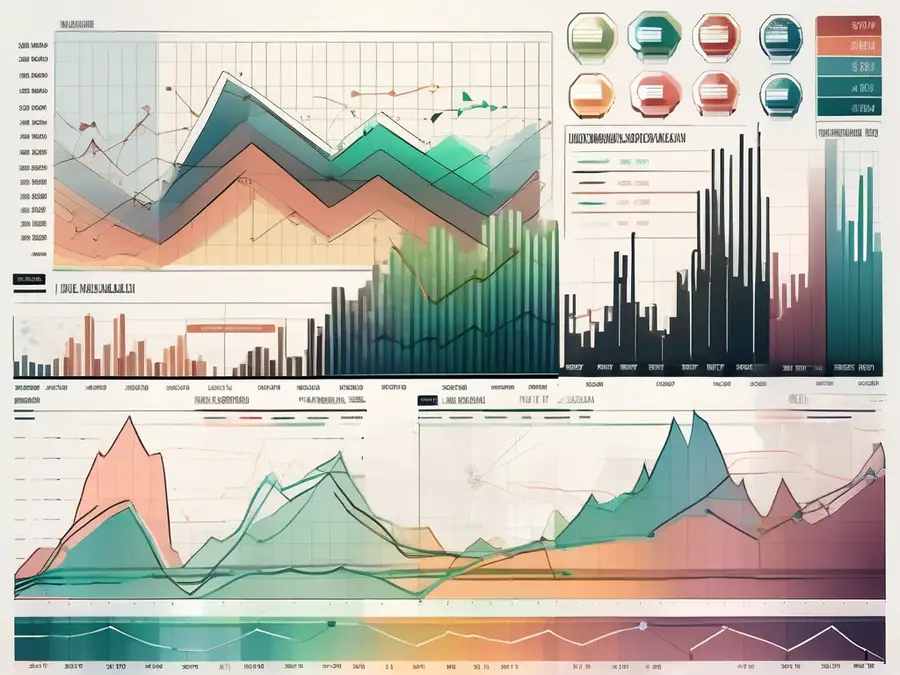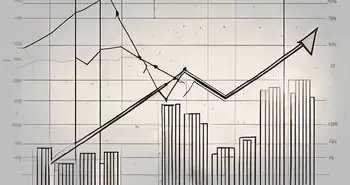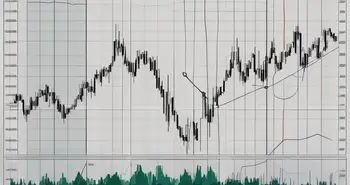Understanding Depth of Market: How to Leverage Market Liquidity for Better Trades

Understanding the nuances of market behavior is essential for anyone venturing into trading. One of the critical concepts that traders must grasp is the Depth of Market (DOM), which provides a clearer view of market activity beyond just price movement. In this guide, I will take you through the intricacies of DOM, discussing its components, relevance, and practical strategies derived from my years of experience in the trading world.
What is Depth of Market?
The Basic Concept of Depth of Market
Depth of Market is a real-time view of the current supply and demand on a trading exchange. It shows the levels of orders to buy and sell a particular asset, describing the number of shares or contracts available at different price points. This comprehensive view can help traders anticipate price movements and make informed decisions.
When I first started learning about DOM, I was fascinated by how much information it provides at a glance. Unlike standard charts that show price fluctuations over time, the DOM allows traders to see where potential resistance and support levels lie based on the order book. Each price level displays the cumulative volume of buy and sell orders, offering a snapshot of market liquidity and the potential for price changes. This real-time data can be crucial for day traders who need to react quickly to market shifts.
Additionally, the Depth of Market can reveal the intentions of larger players in the market, often referred to as “smart money.” By observing where large buy or sell orders are placed, traders can infer potential price movements and adjust their strategies accordingly. This insight into the market's inner workings can be invaluable, especially in volatile conditions where price swings can occur rapidly.
Importance of Depth of Market in Trading
The significance of DOM in trading cannot be overstated. It helps traders gauge market sentiment, as a high volume of buy orders at a particular price can indicate strong demand. Conversely, a robust selling pressure can signal potential price declines. Understanding these dynamics allows traders to position themselves more favorably in the market, potentially capitalizing on trends before they become apparent on traditional charts.
Using DOM effectively can be the difference between a profitable or unsuccessful trade. It has helped me identify key entry and exit points, allowing me to position my trades strategically. Understanding DOM is not just academic; it’s a practical tool that can enhance trading performance significantly. Moreover, it fosters a deeper comprehension of market psychology, as traders learn to interpret the behavior of their peers. By recognizing patterns in order flow, one can develop a more nuanced approach to trading, which can lead to improved risk management and greater overall success in the markets.
Components of Depth of Market
Bid Price and Ask Price
The two primary components of DOM are bid price and ask price. The bid price is the highest price a buyer is willing to pay for an asset, while the ask price is the lowest price a seller is willing to accept. The difference between these two prices is known as the spread.
During my trading career, I’ve found that observing the spread is crucial. A narrow spread usually indicates high liquidity, which is ideal for traders looking to enter and exit positions quickly. On the other hand, a wider spread may suggest lower liquidity, leading to slippage and unanticipated costs.
Market Orders and Limit Orders
Orders can be categorized into market orders and limit orders. Market orders are executed at the current market price, while limit orders are set at a specified price. Understanding how these orders interact with the DOM is vital for realizing your trading goals.
In one memorable trading session, I placed a limit order that nearly triggered a market order due to a sudden price movement. This scenario exemplifies how closely observing the DOM can give you insights into potential surprises within the market. Today's dynamic markets require you to be aware of such intricacies constantly.
Reading a Depth of Market Chart
Interpreting the Bid and Ask Volume
When reading a DOM chart, focus on the bid and ask volumes. This data reveals how many shares or contracts are available at each price level. A high bid volume indicates strong buying interest, while a high ask volume reflects selling pressure.
In my experience, I often analyze these volumes to assess buying and selling zones. Understanding where most orders cluster can help you identify possible price reversals or breakouts.
Identifying Market Depth Levels
Market depth levels refer to how many price levels exist before you encounter significant buyer or seller resistance. Recognizing these levels can help you pinpoint where to set stop-loss or take-profit orders effectively.
For instance, I once experienced a situation where I misjudged market depth. Had I paid closer attention to the DOM, I would have avoided a severe loss. Now, I always emphasize the importance of checking depth levels—it's become second nature before executing any trade.
Factors Influencing Depth of Market
Market Liquidity and Volatility
Market liquidity is a crucial factor affecting DOM. In liquid markets, you’ll notice many buy and sell orders at various price levels, promoting easy entry and exit. Conversely, in volatile conditions, the DOM can change rapidly, causing the available prices to shift quickly.
I've witnessed dramatic price changes driven by sudden news events. Understanding current liquidity conditions enables traders to adapt and react swiftly to market fluctuations.
Time of Day and Trading Volume
The time of day can considerably influence DOM. Market opening and closing periods typically see increased volume, while mid-day trading might result in less activity. Traders should note these patterns to finalize their trading strategies.
Over the years, I’ve adjusted my approach based on trading volume during specific times—this adaptability has proven effective in refining my trading strategies.
Strategies for Using Depth of Market Information
Timing Your Trades
Using DOM data helps in timing your trades more effectively. By analyzing the flow of orders, you can gauge when to enter or exit trades based on market sentiment.
There was a particular instance when timing a trade perfectly, informed by DOM, resulted in significant gains. I had observed enough buy orders piling up at a crucial level and decided to go long just before a breakout occurred. These instances confirm the true value of grasping DOM.
Managing Risk with Depth of Market
Risk management is paramount in trading, and utilizing DOM can help you set more informed stop-loss and take-profit levels. By recognizing where orders stack up, you can better gauge where to protect your capital and where to secure profits.
Through conscientious observation of DOM, I have been able to avoid some costly setbacks that many other traders fall victim to due to poor risk management strategies.
FAQ
- What exactly is Depth of Market?
Depth of Market is a real-time view of supply and demand for an asset, showing buy and sell orders at various price levels. It helps traders understand market sentiment.
- How does DOM influence trading decisions?
DOM allows traders to see where most liquidity exists, helping them make informed decisions about entry and exit points.
- What are the main components of Depth of Market?
The main components are bid price, ask price, and their corresponding volumes. Understanding these can help you gauge market activity.
- How can I use DOM for risk management?
By utilizing the data provided by DOM, you can set strategic stop-loss and take-profit levels based on where orders are heavily concentrated.
In conclusion, mastering the Depth of Market can significantly improve your trading efficacy. By understanding its components, reading charts accurately, considering the influencing factors, and adopting relevant strategies, you can elevate your trading to new heights. With experience, you’ll develop a keen intuition for making the most of the information at your fingertips. Happy trading!
Ready to take your trading to the next level with the insights from Depth of Market? Discover Morpher, the revolutionary trading platform that's changing the game. With zero fees, infinite liquidity, and the ability to trade a myriad of assets like stocks, cryptocurrencies, and more, Morpher is the perfect partner for your trading journey. Experience the benefits of fractional investing, short selling without interest fees, and up to 10x leverage to maximize your trades. Sign up now to enjoy a unique trading experience on a platform that prioritizes your safety and control. Sign Up and Get Your Free Sign Up Bonus today, and join the future of investing with Morpher.

Disclaimer: All investments involve risk, and the past performance of a security, industry, sector, market, financial product, trading strategy, or individual’s trading does not guarantee future results or returns. Investors are fully responsible for any investment decisions they make. Such decisions should be based solely on an evaluation of their financial circumstances, investment objectives, risk tolerance, and liquidity needs. This post does not constitute investment advice.

Painless trading for everyone
Hundreds of markets all in one place - Apple, Bitcoin, Gold, Watches, NFTs, Sneakers and so much more.

Painless trading for everyone
Hundreds of markets all in one place - Apple, Bitcoin, Gold, Watches, NFTs, Sneakers and so much more.









